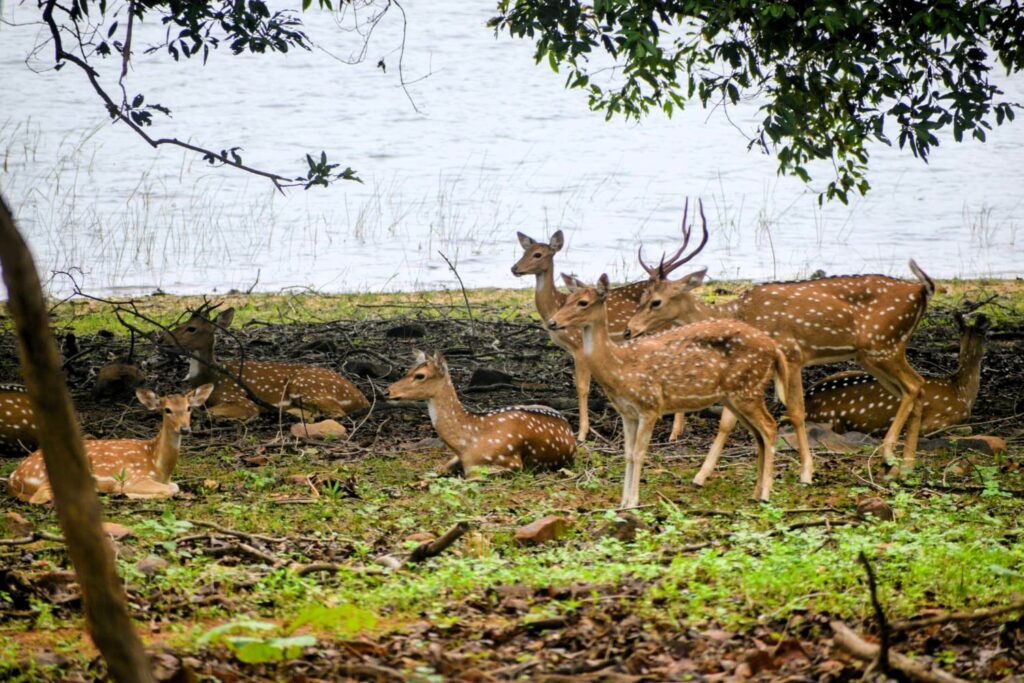
Spotted Deer in Tadoba – The Graceful Chital by the Lake
Introduction
The Spotted Deer (Axis axis), also called Chital, is one of the most graceful and commonly sighted animals in Indian forests. In Tadoba, they form large herds and are often seen grazing near water bodies, alert yet calm, always ready to warn others of approaching predators.
Description of the Photo
This picture shows a peaceful herd of Chital deer resting under the shade near Tadoba’s lake. Some are sitting on the cool ground, while others stand alert with ears raised. The males with antlers add majesty to the group, while the backdrop of water and trees creates a serene and natural setting. It beautifully captures their herd behavior and the calm side of Tadoba’s wildlife.
Appearance
- Golden-brown coat with white spots scattered across the body.
- White underbelly, throat, and inside of legs.
- Males carry impressive three-pronged antlers that can grow up to 1 meter long.
- Elegant build, with large expressive eyes and ears.
Habitat & Behavior
- Found in grasslands, forests, and near water bodies across India.
- Live in large herds, sometimes over 50 individuals.
- Always alert — when alarmed, they give out a loud warning call, alerting the jungle to danger.
- A key prey species for big cats like tigers and leopards in Tadoba.
Fun Facts
- The name “Chital” comes from the Sanskrit word chitrala, meaning “spotted.”
- They are one of the most vocal deer, often barking loudly to warn about predators.
- Unlike some deer, they keep their spots throughout life, not just as fawns.
- They share a special bond with langur monkeys — langurs drop fruits from trees, and deer eat them, while langurs benefit from the deer’s sharp alarm calls.
Why You’ll Love Seeing Them in Tadoba
While tigers may be the star attraction, the Chital deer bring life and beauty to Tadoba’s forests. Their spotted coats, graceful movements, and strong herd bonds are a reminder of the balance of the wild. They are also a symbol of harmony in nature living in cooperation with monkeys, birds, and other species, each helping the other survive. Without them, the forest would lose not just a prey base for predators but also a sense of calm continuity that binds the ecosystem together.
